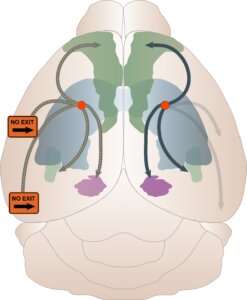
Much like a supply truck crossing the countryside, the misfolded proteins that damage neurons in Alzheimer’s disease travel the “roads” of the brain, sometimes stopping and sometimes re-routing to avoid roadblocks, reports a study published in Science Advances by researchers at Van Andel Institute and University of Pennsylvania.
The findings shed light on how tau proteins, which form tangled clumps that damage brain cells in Alzheimer’s, move through the brain. The study also provides new insights into why some areas of the brain are more vulnerable to damage than other areas.
“While the interconnected…

























